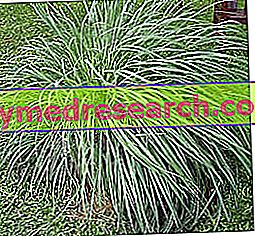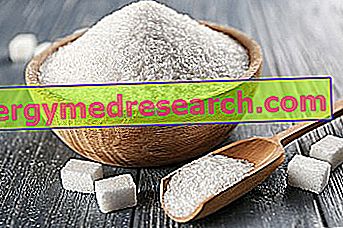Introduction
When it comes to lemongrass, most people immediately refer to the fragrance of the same name used in many anti-mosquito products; in fact, the essential oil extracted from the citronella plant is rich in geraniol and citronellol, monoterpenic alcohols with known repellent properties.

Botanical description
The citronella plants ( Cymbopogon nardus or Andropogon nardus ) belong to the Graminaceae family: we are analyzing perennial evergreen grasses, typical of areas with tropical or warm-temperate climate, comparable structurally to sorghum. Showing a typically bushy habit, the lemongrass does not generally exceed the meter in height; the leaves, with a paper consistency, are ribbon-shaped, 60-70 centimeters long, and feature a beautiful bright green, sometimes tinged with blue. [taken from wikipedia]
The leaves are supported by erect and rigid stems, comparable, in some ways, to the bamboo; the characteristic that distinguishes the citronella leaves is the intense fragrance emanating in the environment, with a sweet and citrusy note.
Chemical composition
The citronella plant gives the same name to the essence obtained; precisely, the essential oil of citronella can be extracted from two different species, the Java citronella (or Cymbopogon winterianus ) and the Ceylon citronella ( Cymbopogon nardus ), plants with arboreal-bushy habit belonging to the Graminaceae family.
- Java citronella
It is a typical plant of China, Indonesia, Taiwan, Colombia and Brazil, cultivated for the citronella oil of the same name. It consists of a substantial amount of citronellol.
- lemongrass of Ceylon
It is cultivated mostly in Sri Lanka and is equally exploited for its essential oil.
In terms of molecular chemical composition, the two varieties do not differ much from each other; the essential oil - obtained by steam distillation - consists of a good part of geraniol (variable from 15 to 20%), from borneol (max 8%), citronellal (5-15%), citronellol (max 10 %), natural and methyl-eugenol. [composition of the essential oil from the reasoned dictionary of herbal medicine and phytotherapy, by A. Bruni, M. Nicoletti]
The essence of citronella is partly also found in basil and geranium.
Loans
We have seen that the use of citronella is focused on the use of the essential oil for the formulation of repellent products (candles, ointments, body sprays, etc.); however, given its extremely intense and penetrating essence, lemongrass is also highly appreciated in perfumery and in the food industry for flavoring sauces, soups and herbal teas.
Property
There are numerous medicinal virtues ascribed to the essential oil of citronella: antiseptic, antidepressant, anti-inflammatory, diuretic, vermifuge, astringent, analgesic and decongestant. In the CNS, lemongrass produces a calming and balancing effect. Furthermore, it seems that lemongrass is a natural remedy to fight against aerophagia and stomach swelling.
Citronella is probably also useful for balancing the menstrual cycle.
Hypothetical antitumor activity
Recently, Israeli researchers have observed that a species belonging to the genus Cymbopogon is able to destroy tumor cells: the citral contained in the essence of citronella induces apoptosis of harmful cells. However, only in vitro studies have been performed, so it has not yet been shown that citronella can actually forge the title of "anticancer plant".
Summary
Lemongrass: TO FIX THE CONCEPTS
Citronella | Repellent substance par excellence Cosmetics → makes the perfume of products more pleasant Cooking → aroma of sauces, soups and herbal teas |
| Citronella: brief botanical description |
|
| Citronella: distinctive feature | Intense fragrance emanating in the environment, with a sweet and citrusy note |
| Lemongrass: variety |
|
| Citronella: essential oil and chemical composition |
|
| Citronella essential oil: uses | Mainly → for the production of repellent products Perfumery → perfumes Cooking → herbal teas, soups |
| Citronella essential oil: properties |
|
| Citronella essential oil and possible antitumor activity | Citral in the essence of citronella: induces tumor cells to apoptosis → IN VITRO STUDIES → the theory is not yet scientifically confirmed |



